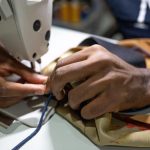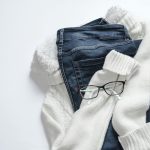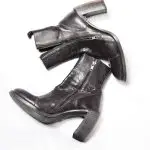You want to stay dry, stay comfortable, and stay focused when wearing body armor or protective gear. Choosing the right base layer can make all the difference in managing sweat and preventing irritation during intense activity. But not all fabrics or fits perform equally well under armor, and overlooking key features could leave you dealing with discomfort or overheating. Let’s explore what makes the best underlayer for staying dry and comfortable in demanding conditions.
Table of Contents
Key Takeaways
- Wear moisture-wicking fabrics that pull sweat away from the skin to keep you dry and comfortable under body armor.
- Choose lightweight, breathable base layers with advanced moisture management for better airflow and quick drying.
- Opt for antimicrobial or odor-control treated fabrics to reduce bacteria and maintain freshness during extended wear.
- Ensure a proper fit with adjustable, flexible materials to prevent bunching and allow free movement without trapping moisture.
- Avoid heavy cotton or bulky fabrics that retain sweat and increase chafing; select seamless or flatlock stitched garments for smooth comfort.
Importance of Moisture-Wicking Fabrics
Although body armor provides critical protection, it can trap heat and sweat against your skin. That’s why choosing the right base layer is essential.
Moisture absorption and fabric breathability become your best friends under heavy gear. You want a fabric that pulls sweat away from your skin, keeping you dry and comfortable throughout your mission or workout.
Moisture-wicking fabrics do just that—they actively move sweat to the fabric’s surface, where it evaporates quickly. This prevents moisture buildup, which can cause chafing or discomfort.
When you prioritize breathability, your body can regulate temperature better, reducing overheating risks.
Benefits of Odor Control Technology
You’ll want odor control technology in your base layers to stop bacteria growth that causes unpleasant smells.
This keeps your gear feeling fresher, even during extended wear.
Staying hygienic under body armor means you can focus on the mission without distraction.
Bacteria Growth Prevention
Odor control technology regularly helps prevent bacteria growth under your body armor, keeping you fresher and more comfortable during long wear.
When you wear protective gear, sweat creates a warm, moist environment that encourages bacteria to thrive, leading to unpleasant odors and potential skin irritation.
By choosing base layers with built-in odor control features, you inhibit bacteria growth at its source. These fabrics often contain antimicrobial treatments or natural fibers that resist bacteria development, reducing odor and skin issues.
This means you can focus on your mission without distraction.
Incorporating odor control technology into your protective gear setup not only enhances comfort but also promotes hygiene, helping your skin stay healthy even after extended use.
It’s a smart, practical choice for anyone wearing body armor regularly.
Prolonged Use Hygiene
When you wear body armor for extended periods, maintaining hygiene becomes essential to your comfort and skin health. Prolonged wear increases sweat buildup, creating an environment where odor-causing bacteria thrive.
Incorporating odor control technology into your base layers helps combat this by neutralizing smells before they develop. These fabrics use antimicrobial treatments that reduce bacterial growth, keeping you fresher longer.
To optimize prolonged use hygiene, follow consistent hygiene practices: change undershirts regularly, wash gear thoroughly, and allow your skin to breathe during breaks.
Choosing moisture-wicking, odor-resistant materials under your armor not only enhances comfort but also prevents skin irritation and unpleasant odors.
Choosing the Right Fit and Comfort Features
Although body armor provides critical protection, selecting the right fit and comfort features can make all the difference in how effectively you perform. You want gear that moves with you, not against you.
Pay attention to fit adjustments to guarantee your armor sits snugly without restricting motion. Comfort enhancements like breathable fabrics and padded lining reduce irritation during long wear.
Look for these key features when choosing what to wear under your armor:
- Adjustable straps or panels for a secure fit
- Moisture-wicking, soft inner layers
- Seamless or flatlock stitching to prevent chafing
- Lightweight, flexible materials that don’t bulk up
- Ventilation zones to promote airflow
These elements work together to keep you dry, comfortable, and ready for action.
Advanced Material Technologies for Moisture Management
Moisture management plays an essential role in keeping you comfortable under body armor, especially during intense activity.
Advanced material technologies like smart textiles and performance fabrics are designed to wick sweat away from your skin, keeping you dry and reducing irritation. These fabrics use microfibers and specialized weaves that enhance breathability while rapidly transporting moisture to the outer layers.
Some smart textiles even adapt to changing temperatures and humidity, adjusting their properties to optimize comfort. When you choose gear made from these materials, you benefit from improved airflow and quicker drying times, which prevent chafing and overheating.
Incorporating advanced moisture-wicking fabrics under your body armor guarantees that you stay focused and comfortable, no matter how demanding the situation gets.
Effective Layering Strategies for Body Armor
Since comfort and protection go hand in hand, mastering effective layering strategies under your body armor is essential.
Using proper layering techniques, you can regulate temperature, manage moisture, and maintain mobility. Start with a moisture-wicking base layer to keep sweat away from your skin. Add a lightweight insulating layer if needed for colder conditions. Choose breathable fabrics that prevent overheating.
Avoid bulky items that could cause discomfort or restrict movement. Prioritize comfort solutions that fit snugly but don’t bind.
- Moisture-wicking base layer
- Lightweight insulating mid-layer
- Breathable, stretchable fabrics
- Thin, snug fit to avoid bulk
- Quick-dry materials for moisture control
These layering techniques help you stay dry, comfortable, and protected beneath your armor throughout demanding situations.
Best Care Practices for Protective Base Layers
To keep your protective base layers performing at their best, you need to follow proper washing guidelines that avoid harsh detergents and high heat.
Always air-dry them to maintain fabric integrity and store them in a cool, dry place away from direct sunlight.
These simple steps will help extend the life of your gear and keep it comfortable during use.
Washing Guidelines
Even though protective base layers are designed for durability, you should treat them with care when washing to maintain their effectiveness.
Different fabric types like merino wool, synthetic blends, and moisture-wicking materials need specific washing temperatures to preserve their properties. Avoid hot water that can damage fibers or shrink fabrics.
Follow these washing guidelines:
- Use cold or lukewarm water (30°C/86°F max) to protect fabric integrity
- Select a gentle cycle to reduce wear and tear
- Use mild, non-bleach detergents suitable for technical fabrics
- Avoid fabric softeners as they can clog moisture-wicking pores
- Wash base layers separately or with similar materials to prevent abrasion
Drying and Storage
While washing sets the foundation for maintaining your protective base layers, proper drying and storage are just as essential to preserve their performance.
Use gentle drying techniques like air drying or low heat in a dryer to prevent fabric damage and maintain moisture-wicking properties. Avoid high heat, which can degrade fibers and reduce breathability.
Once dry, store your base layers in a cool, dry place away from direct sunlight to avoid fading and material breakdown. Opt for storage solutions like breathable garment bags or drawers that allow airflow, preventing mold and odors.
Keeping your protective gear well-dried and properly stored guarantees it stays comfortable, effective, and ready for action whenever you need it.
Prioritize these steps to extend your base layers’ lifespan and performance.
Avoiding Common Fabric Pitfalls Under Armor
Although choosing the right fabric might seem straightforward, many people make avoidable mistakes that reduce comfort and performance under body armor.
Understanding fabric types and common mistakes can help you stay dry and comfortable. Avoid heavy cotton, which traps moisture and slows drying. Don’t pick fabrics that cause chafing or restrict movement since you need flexibility. Avoid materials that retain odors or irritate your skin. Finally, steer clear of fabrics that don’t wick sweat away efficiently.
Choose fabrics that wick moisture, prevent chafing, and allow movement to stay dry and comfortable under armor.
Here are common pitfalls to avoid:
- Using 100% cotton shirts under armor
- Choosing bulky or thick fabrics
- Wearing rough-textured materials that cause irritation
- Selecting fabrics with poor moisture-wicking properties
- Ignoring fit, leading to bunching or discomfort
Picking the right fabric keeps you comfortable and focused during tough conditions.
Frequently Asked Questions
Can Body Armor Be Worn Comfortably in Extreme Cold Weather?
Sure, freezing in body armor’s your new winter sport! But you can stay cozy with cold weather comfort and smart layering techniques. Just pick moisture-wicking layers and insulated fabrics, so you don’t turn into a human icicle.
How Often Should Body Armor Base Layers Be Replaced?
You should replace your base layer regularly, considering base layer longevity depends on wear and wash frequency. Typically, replacement frequency is every 6-12 months to maintain moisture-wicking and protection, ensuring comfort during body armor use.
Are There Specific Brands Recommended for Tactical Moisture-Wicking Gear?
When you gear up, it’s like armor for your sweat. Tactical brands like Under Armour and 5.11 use moisture-wicking materials that pull sweat away, keeping you dry and comfortable during intense missions or workouts.
Can Moisture-Wicking Fabrics Be Used for Non-Tactical Sports?
You can definitely use moisture-wicking fabrics for non-tactical sports. They enhance moisture management and boost athletic performance by keeping you dry and comfortable during workouts, so you’ll stay focused and perform at your best every time.
Do Moisture-Wicking Base Layers Help Prevent Heat Rash?
Yes, moisture-wicking base layers help with heat rash prevention by managing moisture effectively. When you wear them, they pull sweat away from your skin, keeping you dry and reducing irritation that causes heat rash.
- Does Chiffon Fabric Stink - July 15, 2025
- Does Chiffon Fabric Affect the Economy - July 15, 2025
- Does Cotton Fabric Have a Nap - July 15, 2025







